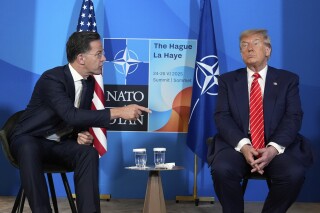The question “what is NATO” has gained renewed attention as the North Atlantic Treaty Organization hosts its historic 2025 Summit in The Hague, Netherlands, on June 24-25. This alliance, formed in 1949, remains a cornerstone of global security, uniting 32 member nations from Europe and North America to ensure collective defense. Recent developments, including increased defense spending targets and heightened geopolitical tensions, have thrust NATO into the spotlight. As world leaders address pressing issues like the Ukraine conflict and hybrid threats, understanding what NATO is and its evolving role is more critical than ever.
The Core of What Is NATO
NATO, or the North Atlantic Treaty Organization, is a military and political alliance founded on April 4, 1949, in Washington, D.C. Its primary purpose is collective defense, meaning an attack on one member is considered an attack on all, as outlined in Article 5 of the Washington Treaty. Originally established to counter Soviet expansion during the Cold War, NATO has adapted to address modern threats like cyberattacks, terrorism, and hybrid warfare. Today, it comprises 32 members, with Sweden and Finland joining in 2024 and 2023, respectively, prompted by Russia’s invasion of Ukraine.
In 2025, NATO’s mission remains focused on deterrence and defense. The alliance conducts joint military exercises, such as the ongoing Steadfast Dart 2025, involving 10,000 troops from nine nations. These drills test NATO’s rapid-response capabilities, particularly along its eastern flank, amid concerns over Russian aggression. NATO also fosters cooperation with non-member partners, including Ukraine and Indo-Pacific nations like New Zealand, to address global security challenges.
Key Developments at the 2025 NATO Summit
The 2025 NATO Summit, hosted for the first time in the Netherlands, marks a pivotal moment for the alliance. Leaders agreed to a new defense spending target of 5% of GDP, a significant increase from the previous 2% benchmark. This decision, driven by U.S. pressure and rising threats, aims to bolster NATO’s military capabilities. Countries like Poland, spending 4.7% of GDP, and Estonia, exceeding 5%, are leading the charge, while others, like Spain, face challenges meeting the new goal.
The summit also addressed support for Ukraine, with President Volodymyr Zelenskyy addressing Dutch lawmakers. While NATO reaffirmed its commitment to Kyiv, no formal invitation for membership was extended due to ongoing conflict and differing member views. Additionally, the alliance unveiled an Updated Defence Production Action Plan and a Commercial Space Strategy to enhance innovation and counter threats in space and cyberspace.
Key Points Summary:
- NATO Summit 2025 held in The Hague, Netherlands, on June 24-25.
- New 5% GDP defense spending target agreed upon.
- Focus on Ukraine support, deterrence, and hybrid threats.
- Steadfast Dart 2025 exercises strengthen eastern flank readiness.
NATO’s Response to Hybrid Threats and Global Tensions
What is NATO’s role in addressing modern warfare? The alliance faces complex challenges, including hybrid threats from Russia and China. Recent incidents, like the 2024 and 2025 damage to Baltic Sea undersea cables, have raised concerns about critical infrastructure vulnerabilities. NATO’s intelligence suggests Russian involvement, prompting increased surveillance operations in the region by Belgian and Dutch forces.
The alliance is also countering disinformation campaigns targeting its eastern flank. For instance, Romania’s 2024 election faced alleged interference, underscoring the need for robust cyber defenses. At the summit, leaders discussed strategies to combat these threats, emphasizing resilience and technological innovation. NATO’s partnerships with the EU and private sector defense firms aim to strengthen supply chains and develop advanced technologies.
The Future of NATO in a Changing World
As NATO navigates uncertainties, such as potential shifts in U.S. commitment and rising Euroscepticism in Europe, its unity is tested. The 2025 Summit highlighted efforts to ensure a “fairer” burden-sharing model, with European nations increasing contributions to reduce reliance on the U.S., which currently funds 65% of NATO’s budget. Political transitions, like Poland’s new president questioning Ukraine’s NATO accession, add complexity to the alliance’s cohesion.
Despite challenges, NATO remains a vital force for global stability. Its ability to adapt—evident in expanded membership, enhanced exercises, and new spending targets—positions it to address emerging threats. As Secretary General Mark Rutte emphasized, NATO must “unite, innovate, and deliver” to safeguard its one billion citizens.
Conclusion: Why NATO Matters Today
Understanding what is NATO reveals its enduring relevance in a volatile world. The 2025 Summit underscored the alliance’s commitment to collective defense, innovation, and resilience amid rising tensions. From bolstering defense budgets to countering hybrid threats, NATO’s actions shape global security. As challenges evolve, staying informed about NATO’s role empowers us to grasp its impact on peace and stability.
Share your thoughts on NATO’s future in the comments below, and subscribe for the latest updates on global security news!
